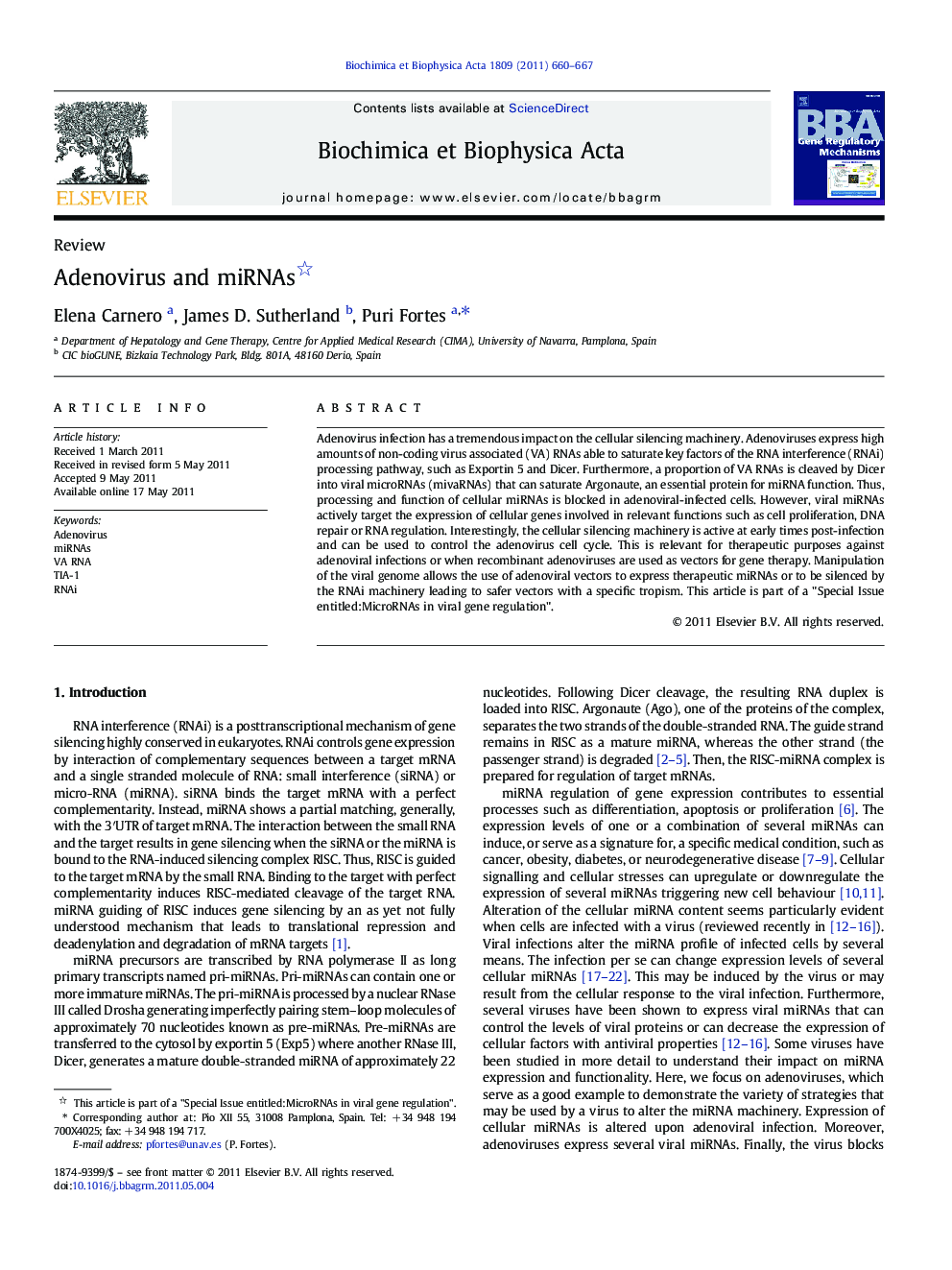| Article ID | Journal | Published Year | Pages | File Type |
|---|---|---|---|---|
| 1946607 | Biochimica et Biophysica Acta (BBA) - Gene Regulatory Mechanisms | 2011 | 8 Pages |
Adenovirus infection has a tremendous impact on the cellular silencing machinery. Adenoviruses express high amounts of non-coding virus associated (VA) RNAs able to saturate key factors of the RNA interference (RNAi) processing pathway, such as Exportin 5 and Dicer. Furthermore, a proportion of VA RNAs is cleaved by Dicer into viral microRNAs (mivaRNAs) that can saturate Argonaute, an essential protein for miRNA function. Thus, processing and function of cellular miRNAs is blocked in adenoviral-infected cells. However, viral miRNAs actively target the expression of cellular genes involved in relevant functions such as cell proliferation, DNA repair or RNA regulation. Interestingly, the cellular silencing machinery is active at early times post-infection and can be used to control the adenovirus cell cycle. This is relevant for therapeutic purposes against adenoviral infections or when recombinant adenoviruses are used as vectors for gene therapy. Manipulation of the viral genome allows the use of adenoviral vectors to express therapeutic miRNAs or to be silenced by the RNAi machinery leading to safer vectors with a specific tropism. This article is part of a "Special Issue entitled:MicroRNAs in viral gene regulation".
Research highlights► The silencing machinery is active at early times post adenoviral infection. ► Later, Adenoviruses have evolved to both use and block the RNA silencing machinery. ► Adenovirus blocks RNAi by expression of VA RNA, able to saturate Exp5, Dicer and Ago. ► VA RNAs are processed to viral miRNAs able to control the expression of target genes. ► This should be considered in the design of adenoviral vectors for gene therapy.
